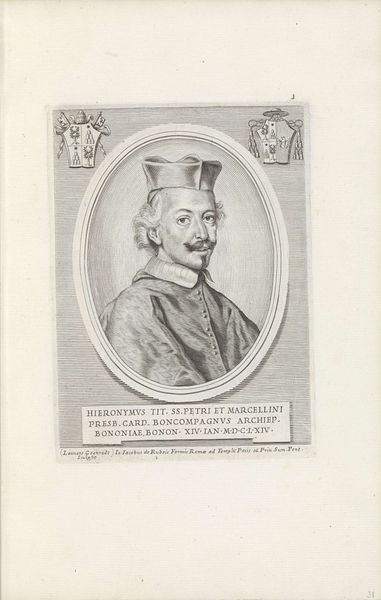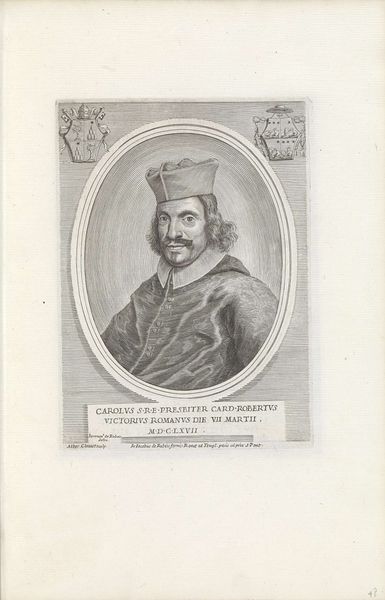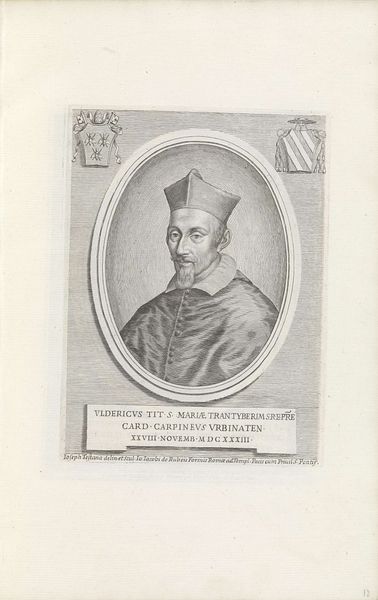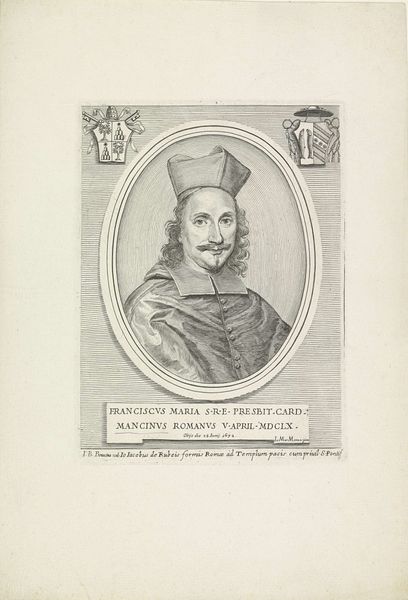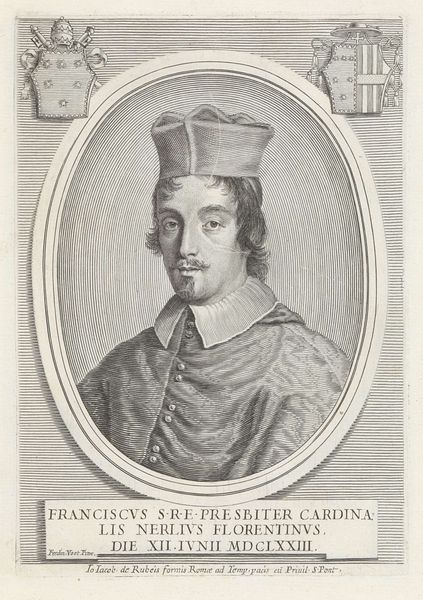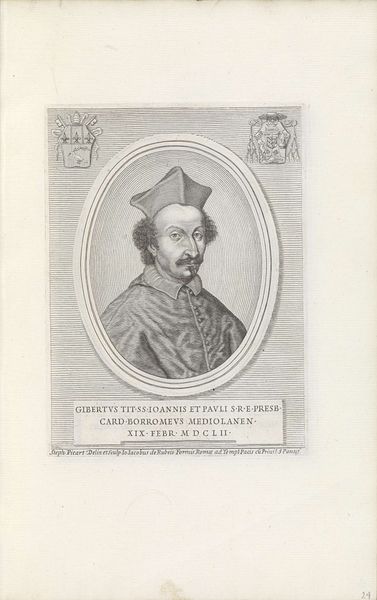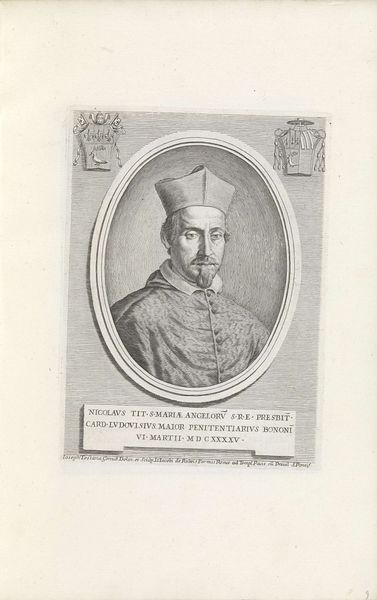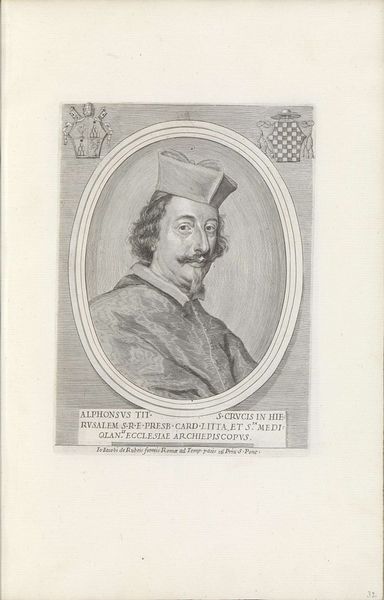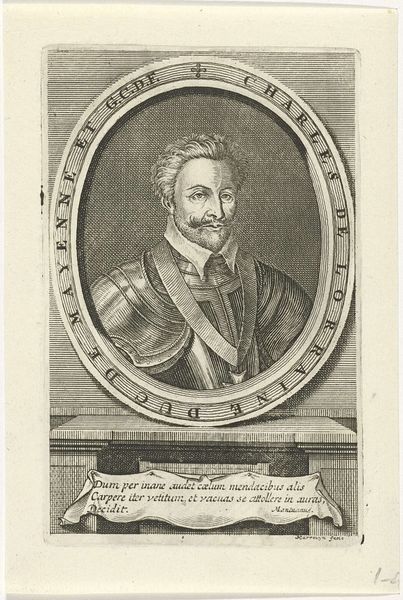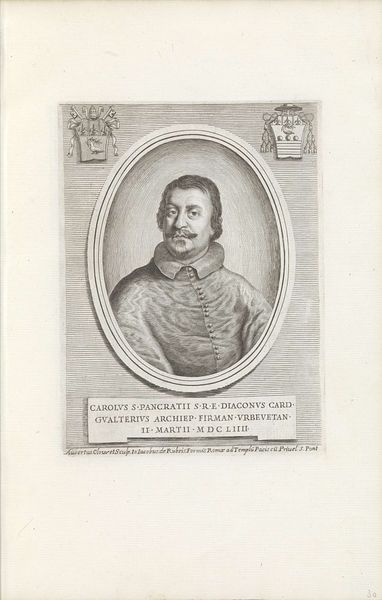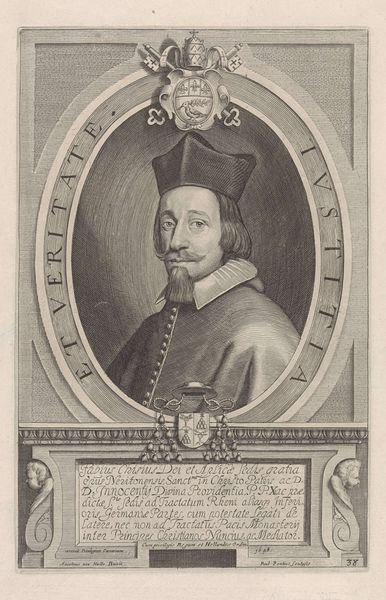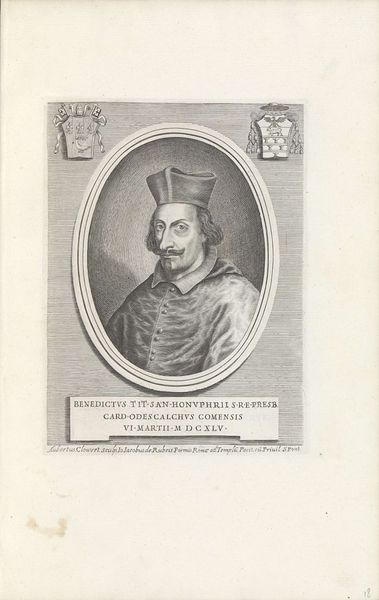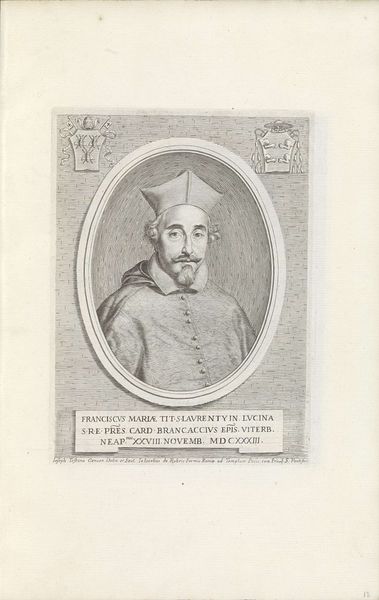
print, engraving
#
portrait
#
baroque
# print
#
old engraving style
#
pencil drawing
#
history-painting
#
engraving
Dimensions: height 196 mm, width 145 mm
Copyright: Rijks Museum: Open Domain
Curator: What strikes me immediately is the intricate nature of this print, titled "Portret van kardinaal Carlo Bonelli," created by Adriaen Haelwegh sometime between 1664 and 1691. It's an engraving, giving it a crisp, formal quality. Editor: The lines are exquisite. You can almost feel the paper’s texture despite the digital reproduction. I’m fascinated by the level of detail that would have gone into carving this, particularly around the cardinal's garments and that fantastic goatee. Did Haelwegh engrave this from a painting? It looks almost like a reproductive print. Curator: Likely, yes. The image would have been reproduced to amplify the cardinal's image, and potentially as a form of political currency. The strategic distribution of his portrait solidifies his place in the church's hierarchy and influence, as you see emblems included around the central portrait. Editor: I can’t help but think about the engraver’s labor. What was Haelwegh’s social standing? How long did this process actually take, and how did this specific kind of artisan contribute to larger systems of production and networks of power at the time? It is a physically demanding and very exacting process, which, from a material perspective, connects labour directly to power and institutional strength. Curator: That’s key to understanding its cultural weight. These kinds of prints were not mass-produced in the modern sense. There’s a deliberate act of curation and circulation here. It suggests that there was an intentional use of the medium and imagery to establish an understanding of a key political figure, imbuing the church with authority. Editor: Right, it speaks to the carefully crafted construction of power through image. Considering that these are visual technologies, can we then also trace this line all the way to how similar kinds of social effects still permeate photography and today's image-based social media practices? Curator: Precisely. The lineage is there, demonstrating a through line across artistic practice. So it’s far more than a portrait. This is also a statement on social, institutional power, and its relationship to art itself. Editor: Thanks, I see how focusing on these details truly expands one's appreciation of this work beyond just its face value as a portrait. Curator: Indeed. By examining its production and social history, we get a glimpse into the cultural values and systems of that time.
Comments
No comments
Be the first to comment and join the conversation on the ultimate creative platform.
